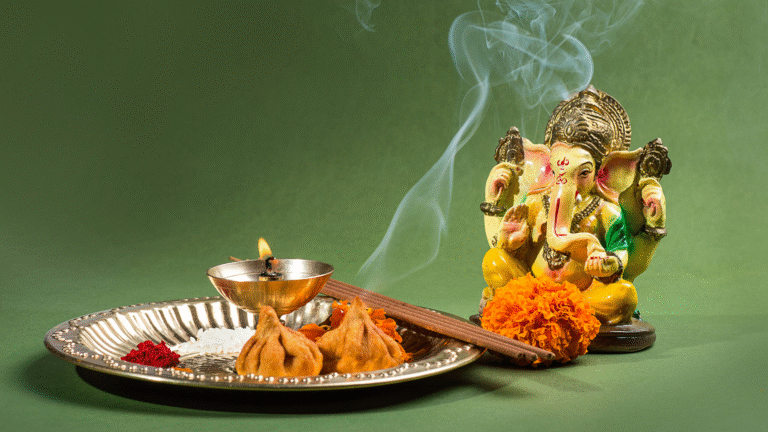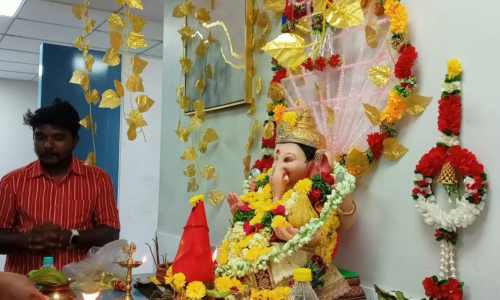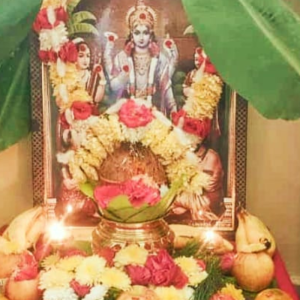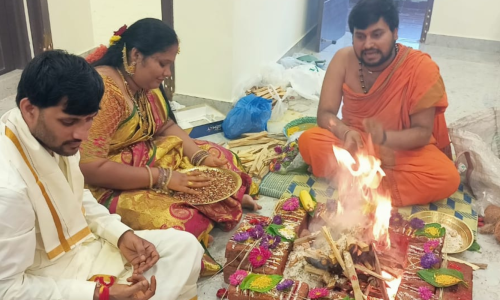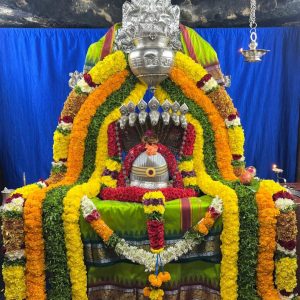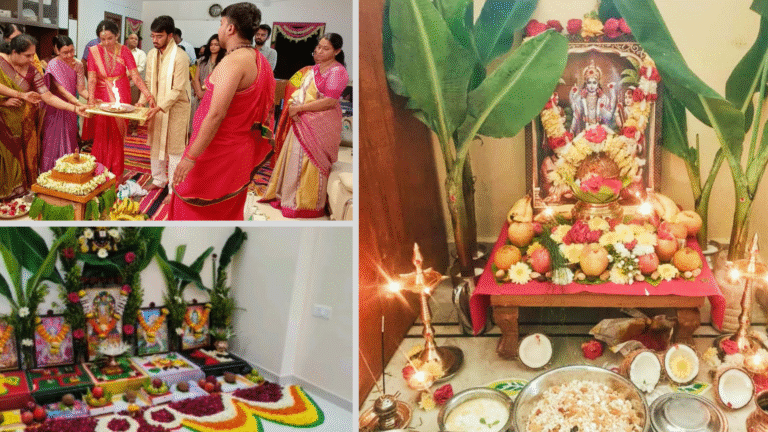Ayushya Homam: Meaning, Benefits & Procedure Explained
In Hindu tradition, longevity, good health, and protection from untimely death are considered divine blessings. One sacred Vedic ritual that invokes these blessings is Ayushya Homam—a powerful fire ceremony dedicated to Lord Ayur Devata, the deity of life and health.
Whether you’re planning this ritual for your child, a loved one, or yourself, understanding the Ayushya Homam meaning, benefits, and procedure can help you perform it with intention and reverence.
What is Ayushya Homam?
Ayushya Homam is a sacred fire ritual performed to invoke divine protection, promote longevity, and restore good health. The word “Ayushya” comes from Ayush, meaning life or age, and “Homam” refers to a sacrificial fire ritual.
The Homam is performed by chanting powerful Vedic mantras from the Rig Veda, Yajur Veda, and Atharva Veda, seeking blessings from Ayur Devata for a long, healthy, and prosperous life.

When Should Ayushya Homam Be Performed?
Ayushya Homam is commonly performed:
On birthdays, especially for children
After recovering from major illnesses or surgeries
To ward off untimely or unnatural death as per horoscope doshas (like Mṛityu Yoga)
During Ayushya Muhurat based on the individual’s Janma Nakshatra
✅ Pro Tip: Ayushya Homam is often recommended by astrologers for those with health-related doshas or short life indications in their charts.
Who Can Perform Ayushya Homam?
Anyone seeking divine health and longevity can perform this Homam. It is especially beneficial for:
Infants and children, as a protective ritual
Elderly people, to promote strength and vitality
Patients recovering from chronic or life-threatening illnesses
Individuals facing astrological doshas affecting health and lifespan

Benefits of Ayushya Homam
1. Promotes Long Life
The primary purpose of this Homam is to enhance the lifespan and remove any negative karmic influences that shorten life.
2. Strengthens Physical and Mental Health
It balances body and mind, providing strength, stamina, and clarity.
3. Cures Chronic Illnesses
Ayushya Homam is often done to aid recovery from serious diseases and prevent relapse.
4. Shields from Accidents and Untimely Death
The mantras and offerings create a protective aura around the individual.
5. Energizes the Environment
The sacred fire purifies the surroundings, removing negative energy and vibrations.
Ayushya Homam Procedure: Step-by-Step Guide
1. Sankalpam (Vow Declaration)
The ritual begins with the individual or guardian taking a Sankalpam, stating their name, gotra, purpose, and date.
2. Ganapathi Puja
Invoking Lord Ganesha ensures obstacle-free proceedings.
3. Kalasha Sthapana
Setting up the holy pot (Kalasha) with water, mango leaves, and coconut symbolizes the deity’s presence.
4. Invocation of Ayur Devata
Mantras are chanted to invoke Lord Ayur Devata and other supporting deities.
5. Main Homam
The Homa fire is lit, and sacred Ayushya Sukta Mantras are recited while offering ghee, herbs, and samagri.
6. Poornahuti (Final Offering)
A grand offering is made into the fire, signifying the ritual’s completion.
7. Ashirvadam (Blessings)
The individual receives blessings from the priest and elders and consumes prasadam.
Where is Ayushya Homam Commonly Performed?
While the Homam can be done at home, many prefer conducting it at temples for greater spiritual impact.
Famous Temples for Ayushya Homam:
Thirukkadaiyur Temple (Tamil Nadu) – Known for rituals that prevent untimely death
Sri Kalahasti Temple (Andhra Pradesh) – For health-related dosha remedies
Guruvayur Temple (Kerala) – Popular for child-related Homams
Conclusion: A Ritual for Lifelong Vitality
Ayushya Homam is not just a ritual—it’s a spiritual shield, a lifelong blessing, and a Vedic prescription for health and prosperity. Whether you’re celebrating a child’s birthday, recovering from an illness, or seeking protection from negative planetary influences, this Homam offers divine assurance.
✨ Want to organize an Ayushya Homam for yourself or a loved one?
📞 Consult with a local Vedic priest or book a ritual service online.
🌿 Let longevity and health become divine gifts in your life.
FAQs About Aksharabhyasam
Ayushya Homam is performed to promote good health, longevity, and protection from untimely death. It invokes blessings from Ayur Devata.
It is usually performed on birthdays, after major health recovery, or when recommended by astrologers to remove life-threatening doshas.
Yes, it can be performed at home with a qualified priest, though doing it in a temple is considered more auspicious.
The entire procedure usually takes around 2 to 3 hours, depending on the number of priests and mantras involved.



